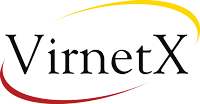(m) “Consultant” means any natural person, including an advisor, engaged by the Company or a Parent or Subsidiary or other Affiliate to render bona fide services to such entity, provided the services (i) are not in connection with the offer or sale of securities in a capital-raising transaction, and (ii) do not directly promote or maintain a market for the Company’s securities, in each case, within the meaning of Form S-8 promulgated under the Securities Act and provided further that a Consultant will only include those persons to whom the issuance of Shares may be registered under Form S-8 promulgated under the Securities Act.
(n) “Director” means a member of the Board.
(o) “Disability” means total and permanent disability as defined in Section 22(e)(3) of the Code, provided that in the case of Awards other than Incentive Stock Options, the Administrator in its discretion may determine whether a permanent and total disability exists in accordance with uniform and non-discriminatory standards adopted by the Administrator from time to time.
(p) “Employee” means any person, including Officers and Directors, employed by the Company or a Parent or Subsidiary or other Affiliate. Neither service as a Director nor payment of a director’s fee by the Company will be sufficient to constitute “employment” by the Company.
(q) “Exchange Act” means the Securities Exchange Act of 1934, as amended.
(r) “Exchange Program” means a program under which (i) outstanding Awards are surrendered or cancelled in exchange for awards of the same type (which may have higher or lower exercise prices and different terms), awards of a different type, and/or cash, (ii) Participants would have the opportunity to transfer any outstanding Awards to a financial institution or other person or entity selected by the Administrator, and/or (iii) the exercise price of an outstanding Award is increased or reduced. The Administrator cannot implement an Exchange Program.
(s) “Fair Market Value” means, as of any date, the value of Common Stock determined as follows:
(i) If the Common Stock is listed on any established stock exchange or a national market system, including without limitation the New York Stock Exchange, NYSE MKT, LLC, Nasdaq Global Select Market, the Nasdaq Global Market or the Nasdaq Capital Market of The Nasdaq Stock Market, its Fair Market Value will be the closing sales price for such stock (or the closing bid, if no sales were reported) as quoted on such exchange or system on the day of determination, as reported in The Wall Street Journal or such other source as the Administrator deems reliable;
(ii) If the Common Stock is regularly quoted by a recognized securities dealer but selling prices are not reported, the Fair Market Value of a Share will be the mean between the high bid and low asked prices for the Common Stock on the day of determination (or, if no bids and asks were reported on that date, as applicable, on the last trading date such bids and asks were reported), as reported in The Wall Street Journal or such other source as the Administrator deems reliable;
(iii) In the absence of an established market for the Common Stock, the Fair Market Value will be determined in good faith by the Administrator.
Notwithstanding the foregoing, if the determination date for the Fair Market Value occurs on a weekend or holiday, the Fair Market Value will be the price as determined in accordance with subsections (i) through (iii) above (as applicable) on the next business day, unless otherwise determined by the Administrator.
(t) “Fiscal Year” means the fiscal year of the Company.
(u) “Incentive Stock Option” means an Option that by its terms qualifies and is intended to qualify as an incentive stock option within the meaning of Section 422 of the Code and the regulations promulgated thereunder.
(v) “Inside Director” means a Director who is an Employee.
(w) “Nonstatutory Stock Option” means an Option that by its terms does not qualify or is not intended to qualify as an Incentive Stock Option.
(x) “Officer” means a person who is an officer of the Company within the meaning of Section 16 of the Exchange Act and the rules and regulations promulgated thereunder.
(y) “Option” means a stock option granted pursuant to the Plan.
(z) “Outside Director” means a Director who is not an Employee.







